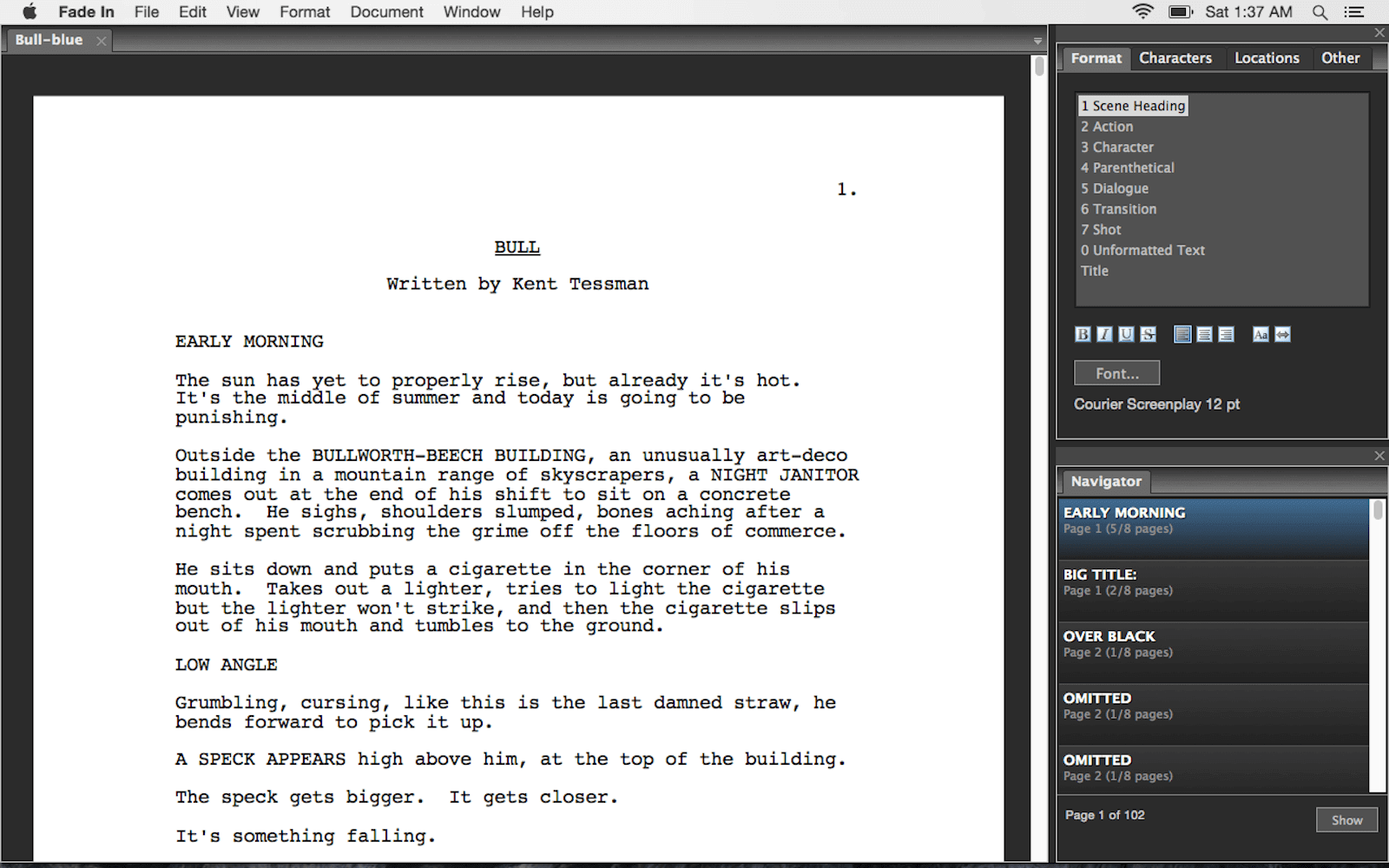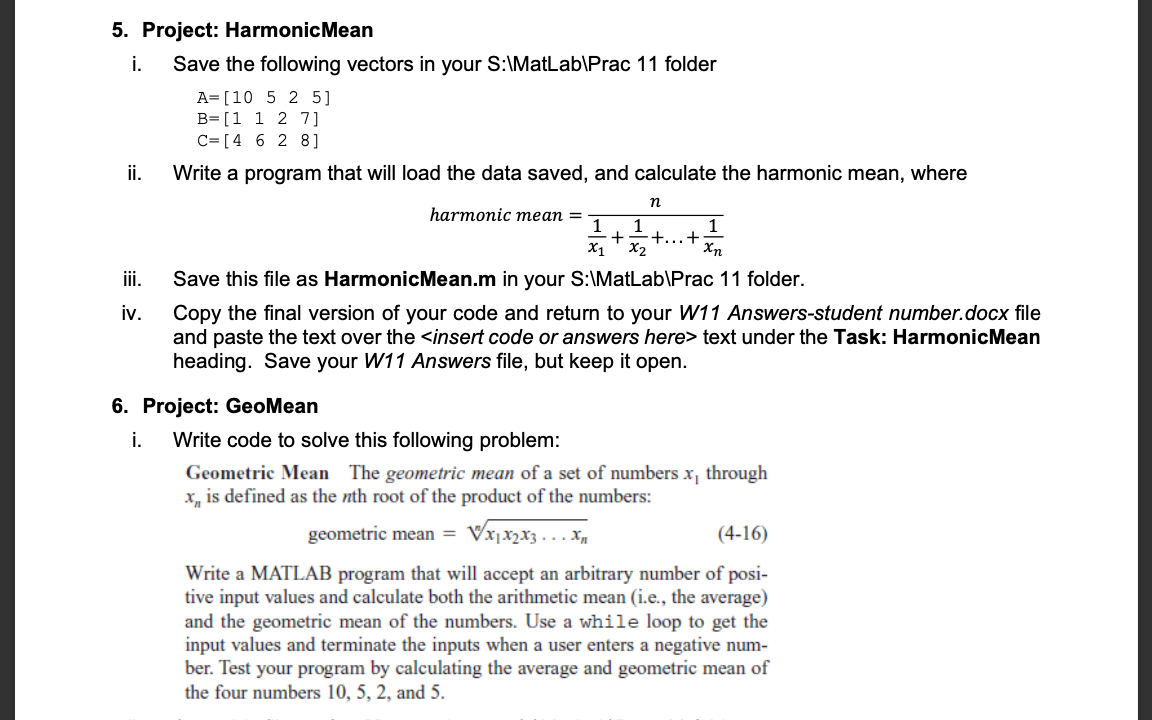

In a " shooting script" the slug lines are numbered consecutively for ease of reference. interior or exterior), the specific location, and the time of day. A slug line, also called a master scene heading, occurs at the start of each scene and typically contains 3 pieces of information: whether the scene is set inside or outside (INT. Unique to the screenplay (as opposed to a stage play) is the use of slug lines.

The dialogue is the words the characters speak, and is written in a center column. The action is written in the present tense and is limited to what can be heard or seen by the audience, for example descriptions of settings, character movements, or sound effects. The major components are action (sometimes called "screen direction") and dialogue.

Wide margins of at least one inch are employed (usually larger for the left to accommodate hole punches). The standard font is 12 point, 10 pitch Courier typeface. The format is structured so that (as a ballpark estimate) one page equates to roughly one minute of screen time, though this often bears little resemblance to the runtime of the final production. Page from a screenplay, showing dialogue and action descriptions, as well as scene cuts However, he also notes that since the screenplay is no longer a technical document, screenwriting is more of a literary endeavour. Andrew Kenneth Gay argues that this shift has raised the status of directors as auteurs and lowered the profile of screenwriters. By the production of Chinatown (1974), this change was complete. While studio era productions required the explicit visual continuity and strict adherence to a budget that continuity scripts afforded, the master-scene script was more readable, which is of importance to an independent producer seeking financing for a project. With the end of the studio system in the 1950s and 1960s, these continuities were gradually split into a master-scene script, which includes all dialog but only rudimentary scene descriptions and a shooting script devised by the director after a film is approved for production. The first use of the term "screenplay" dates to this era : 86 the term "screen play" (two words) was used as early as 1916 in the silent era to refer to the film itself, i.e. Casablanca (1942), is written in this style, with detailed technical instructions interwoven with dialogue.

However, screenwriters soon began to add the shot-by-shot details that characterized continuities of the films of the later silent era. With the advent of sound film, dialog quickly dominated scripts, with what had been specific instructions for the filmmaker initially regressed to a list of master shots. Film researcher Andrew Kenneth Gay posits that, "The process of scripting for the screen did not so much emerge naturally from other literary forms such as the play script, the novel, or poetry nor to meet the artistic needs of filmmakers but developed primarily to address the manufacturing needs of industrial production."
Open final draft 7 in final draft 8 movie#
Ince, a screenwriter himself, invented movie production by introducing an " assembly line" system of filmmaking that utilized far more detailed written materials, clearly dedicated to "separating conception from execution". Griffith's The Birth of a Nation (1915), were made without a script, preapproved " continuities" allowed the increasingly powerful studio executives to more accurately budget for film productions. These scenario scripts evolved into continuity scripts, which listed a number of shots within each scene, thus providing continuity to streamline the filmmaking process. At this time, scripts had yet to include individual shots or dialogue (obviously). Films such as A Trip to the Moon (1902) and The Great Train Robbery (1903) had scenarios consisting respectively of a list of scene headings or scene headings with a detailed explication of the action in each scene. Shortly thereafter, as films grew in length and complexity, film scenarios (also called "treatments" or "synopses" : 92 ) were written to provide narrative coherence that had previously been improvised. In the early silent era, before the turn of the 20th century, "scripts" for films in the United States were usually a synopsis of a film of around one paragraph and sometimes as short as one sentence.


 0 kommentar(er)
0 kommentar(er)
